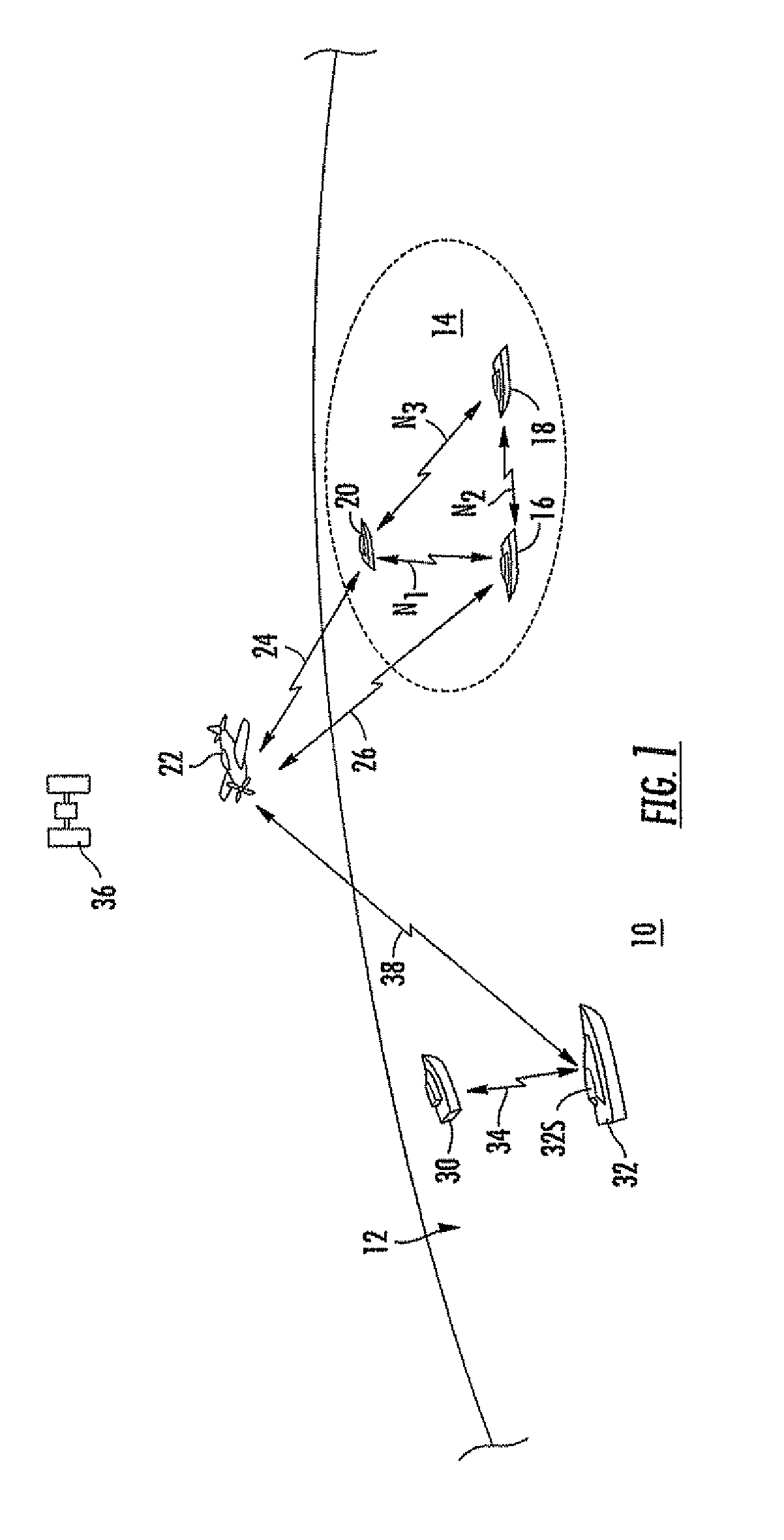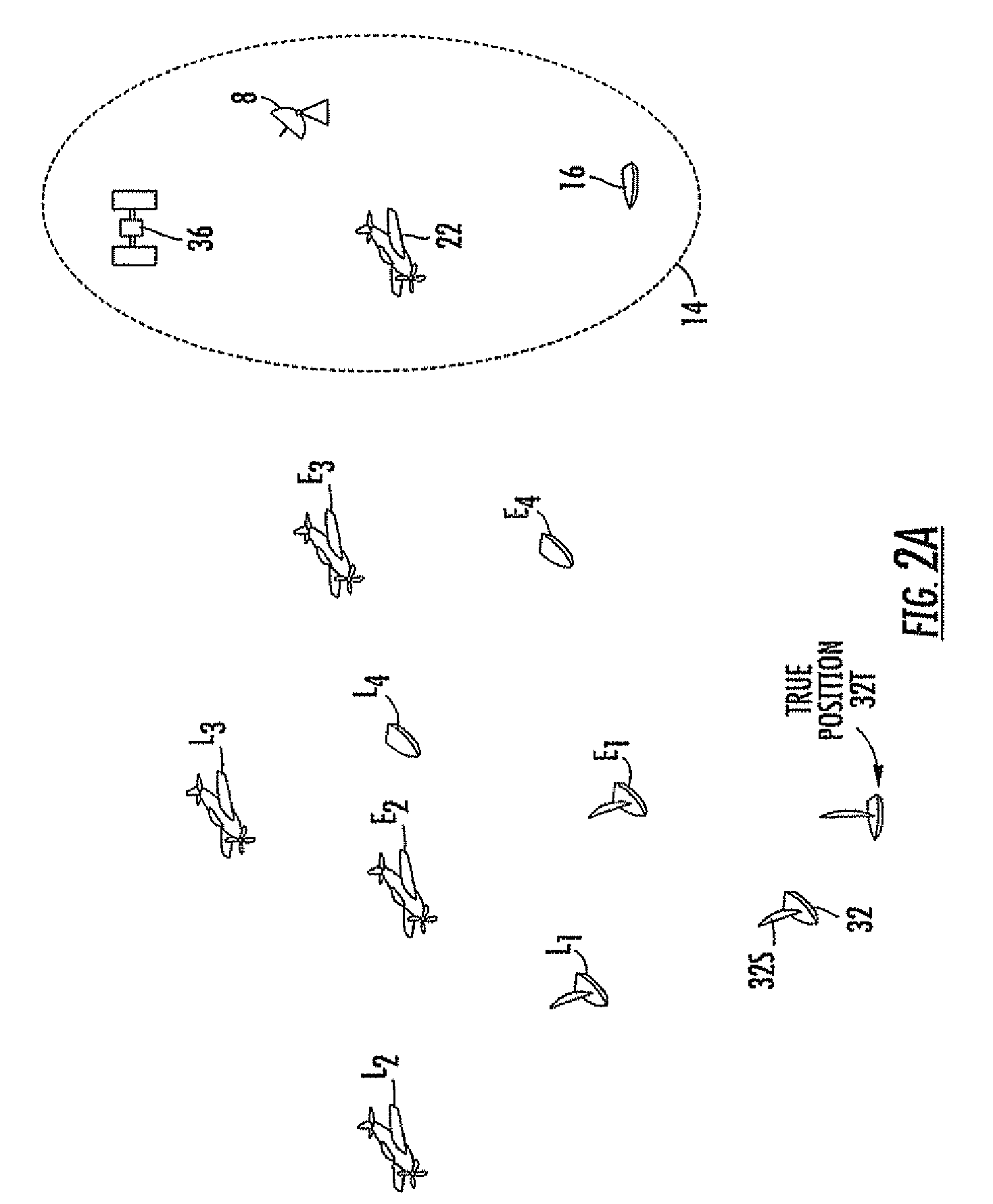Gridlock processing method
a processing method and gridlock technology, applied in wave based measurement systems, instruments, reradiation, etc., can solve the problems of unnecessary launching of a large number of countermeasure missiles and the potential for missing the target of many of the countermeasures, and achieve the effect of improving the registration
- Summary
- Abstract
- Description
- Claims
- Application Information
AI Technical Summary
Benefits of technology
Problems solved by technology
Method used
Image
Examples
Embodiment Construction
[0018]FIG. 2A is a representation of the targets perceived by local and remote sensors. More particularly, ship 32 of FIG. 2A senses targets using its own sensor(s) 32S. The true position of ship 32 in the coordinate system of flotilla 14 is indicated by 32T. As illustrated in FIG. 2A, four targets are sensed or detected by “ownship” or “local” sensor 32S. The first target is a surface vehicle or ship locally sensed at a location designated L1. The second target is an aircraft locally sensed at location L2. The third target is a second aircraft locally sensed at location L3. The fourth target is another surface vehicle locally sensed at location L4.
[0019]As mentioned, the various targets are sensed by sensors which are associated with other platforms than ownship 32. More particularly, land-based platform 8, ship 16, aircraft 22, and spacecraft 36 of FIG. 2A are fitted with their own sensors, which also detect the four targets. Any one of the sensors associated with the remote platf...
PUM
 Login to View More
Login to View More Abstract
Description
Claims
Application Information
 Login to View More
Login to View More - R&D
- Intellectual Property
- Life Sciences
- Materials
- Tech Scout
- Unparalleled Data Quality
- Higher Quality Content
- 60% Fewer Hallucinations
Browse by: Latest US Patents, China's latest patents, Technical Efficacy Thesaurus, Application Domain, Technology Topic, Popular Technical Reports.
© 2025 PatSnap. All rights reserved.Legal|Privacy policy|Modern Slavery Act Transparency Statement|Sitemap|About US| Contact US: help@patsnap.com



